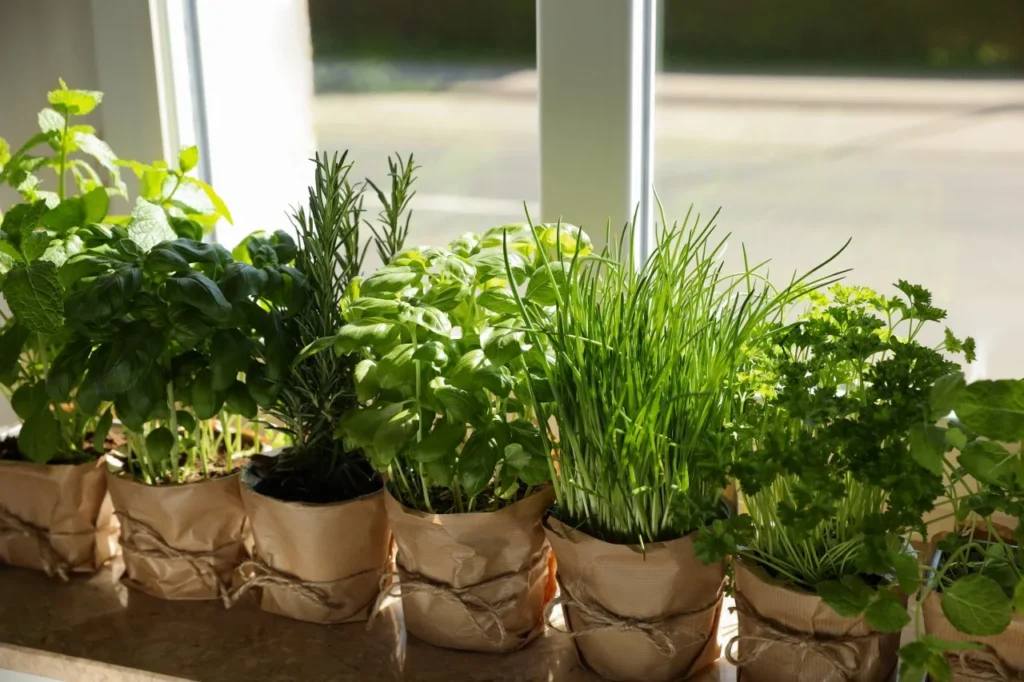Indoor growing of fresh herbs is a simple and fulfilling way of bringing life, flavor, and greenery into your house. Whether you live in a small apartment or busy city house with no yard, you can still have basil, mint, parsley, and more available to you year-round.
If you’re wondering how to easily grow herbs indoors, this guide simplifies it step by step with low-budget methods, beginner tips, and intelligent techniques.
1. Select the Right Herbs for Indoors
Not all herbs perform well indoors. Begin with easy-to-grow herbs that flourish in small containers and need minimal light.
Best herbs for indoor cultivation:
- Basil
- Mint
- Parsley
- Chives
- Cilantro
- Oregano
- Thyme
- Rosemary
Select herbs you use most in cooking for extra convenience and satisfaction.
2. Select the Appropriate Containers
Utilize pots with good drainage holes to avoid overwatering. Small to medium-sized pots (4–6 inches deep) are ideal for most herbs. Terracotta or ceramic pots are ideal and also look lovely on kitchen windowsills.
Tip: Position a saucer or tray under each pot to catch water runoff.
3. Employ Good Quality Potting Mix
Herbs prefer well-draining soil. Do not use garden soil; rather, opt for organic indoor potting mix or an herb and vegetable potting mix. Include some perlite or sand to provide better air circulation and draining.
4. Supply Sufficient Light
Light is one of the essential components when growing herbs indoors. Position your plants by a south-facing window that receives at least 6 hours of sunlight on a daily basis.
Since you do not have natural light, utilize LED grow lights or full-spectrum fluorescent bulbs for your herbs to become healthy and strong.
During the course of your indoor gardening adventure, sites such as Linkhouse can assist you in finding green living blogs, networking with other home gardeners, or even reporting your plant journey by writing stories and poetry. It’s a community where garden enthusiasts, newcomers, and home DIY experts can share and learn together.
5. Water Correctly
Overwatering is easy to do. Most herbs like slightly dry soil. Water when the top inch of soil feels dry—typically every 3 to 5 days based on your indoor conditions.
Tip: Water delicate herbs such as basil or parsley using a spray bottle to prevent washing away the soil.
6. Prune and Harvest Regularly
Pinch off the uppermost leaves regularly to make the plant bushier. Don’t delay—harvest when your herb plant is 4 to 6 inches tall.
Tip: For basil, trim just above a pair of leaves so that it grows two new branches.
7. Rotate and Refresh
Turn pots every few days so all sides receive equal sunlight. Trim dead leaves and renew the topsoil with a small compost or organic fertilizer every few months.
Conclusion
Learning how to cultivate herbs indoors simply is an enjoyable, useful, and eco-friendly pastime. With good light, good soil, and good care, you can have fresh herbs directly from your kitchen windowsill. You’ll not only save money, but you’ll also bring flavor and health into your dinners—right from your own home garden.
